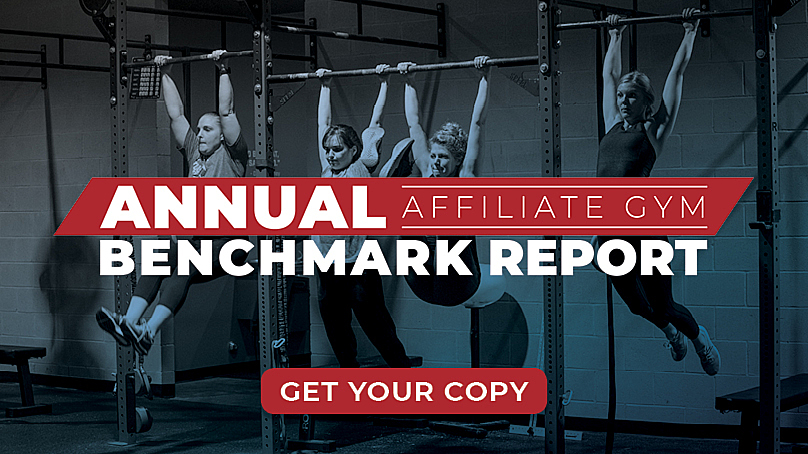5 Financial Tips for Opening an Affiliate Gym


Congratulations on following your dreams and opening your own affiliate gym! Even if you’re in the early stages of opening your box, there’s a good chance you’re already getting excited about the fact that you will soon get to share your love of the sport with a community that you helped build. You will get to help your future athletes set goals and achieve amazing things. You will cheer your athletes on at competitions, and you will get to network with other cool box owners. Following a dream doesn’t get much better than that.
But understandably, there’s a less exciting aspect of opening a box, and that’s the financial management part. If you wanted to be an accountant, you’d be sitting at a desk wearing a suit and tie. But you don’t, and we can help. We talked to some financial management experts and came up with these tips to help you manage your future box’s finances as smoothly as you do those double unders.
Discover top financial tips from successful boxes around the world. Get your copy of our Affiliate Gym Benchmark Report.
1). Create a Business Plan
We’re big fans of planning. Without a solid business plan, there is no vision and foundation you can look to when making decisions. Sure, writing a business plan takes time, but the foundation it provides makes the time investment well worth it.
When you write a business plan, you’re forced to think about your box in a comprehensive and strategic manner. You evaluate your market, possible sources of income, threats that could impact your success and much more. That careful thought process will help you identify smart (financially sound) ways to build your business.
A business plan will also help you if you need to seek funding, enter into a partner agreement or lease or buy commercial property for your box. In all, it’s a critical step in being a successful affiliate gym owner. Trying to manage your finances without one is like training hard but eating poorly- it just doesn’t make sense.
There are a number of sources out there to get you started on a business plan, including the SBA (Small Business Association). We also have a simple yet comprehensive business plan template that will walk you step-by-step through the process of creating one for your box.
2). Build Your Financial Projections
When developing your business plan, you need to build financial projections, including startup costs, monthly expenses and cash flow break-even points. Be realistic with this analysis, even if you’re optimistic by nature. Your financial planning will only be as good as the data you use in these projections.
Experts suggest building out best case, middle-case and worst-case scenario projections. To be safe, plan to run your box off the worst-case projection until you get things off the ground. Not sure where to start with financial projections? No worries, our business plan template contains advice on how to create realistic financial projections.
3). Outsource When Needed
Owning a box requires knowledge that can be very technical or specific. Even when money is tight, it’s important to outsource certain tasks if you can’t do them well. Small details overlooked in contract negotiations and investment or loan paperwork can cost you dearly in the long run. You know what they say, right? Pay now or pay later.
4). Form a Strong Financial Foundation
Cash flow is the foundation of your business. To ensure you have enough of it, build a membership base that provides stable income. Avoid both annual pre-paid or month-to-month membership renewals without a contractual obligation. Both make it impossible to accurately project future revenue and can leave you short of what you need to manage your everyday expenses like rent and electricity.
Instead, consider using membership contracts. Contracts ensure a stable flow of receivables, which will help you plan ahead and make the expenditures you need to grow your business. Automated billing and payments are also a must. They make it easy to collect your receivables on time, every time.
5). Understand Your Metrics
Are you wondering how you will be able to tell if your box is doing well? Your operational and financial metrics will tell you. Even if you’re not a numbers person, it’s important that you have some understanding of these metrics and they are the key to your success. Knowing the different changes you can make to drive different outcomes helps you run your business effectively. But if you don’t know or understand your metrics, you lose that ability. To help you with this, you can check out our insightful Guide to Understanding Your Fitness Business Metrics.
In the end, financial management comes down to planning, understanding and using your metrics. By staying true to these five principles, you’ll have a strong foundation for your affiliate gym’s growth and success.
The most detailed affiliate gym financial performance information on the market is now available. Get your copy of our Affiliate Gym Benchmark Report today.

I’m Coach Kelli, a devoted CrossFit gym owner with 15 years of experience managing my facility, along with owning yoga studios and wellness centers. Beyond the fitness world, I have a passion for cooking, cherish moments with my children and family, and find joy in spending time outside. Having experienced the highs and lows, I’m dedicated to leveraging my expertise to help you grow and succeed on your fitness journey.

I’m Coach Kelli, a devoted CrossFit gym owner with 15 years of experience managing my facility, along with owning yoga studios and wellness centers. Beyond the fitness world, I have a passion for cooking, cherish moments with my children and family, and find joy in spending time outside. Having experienced the highs and lows, I’m dedicated to leveraging my expertise to help you grow and succeed on your fitness journey.







